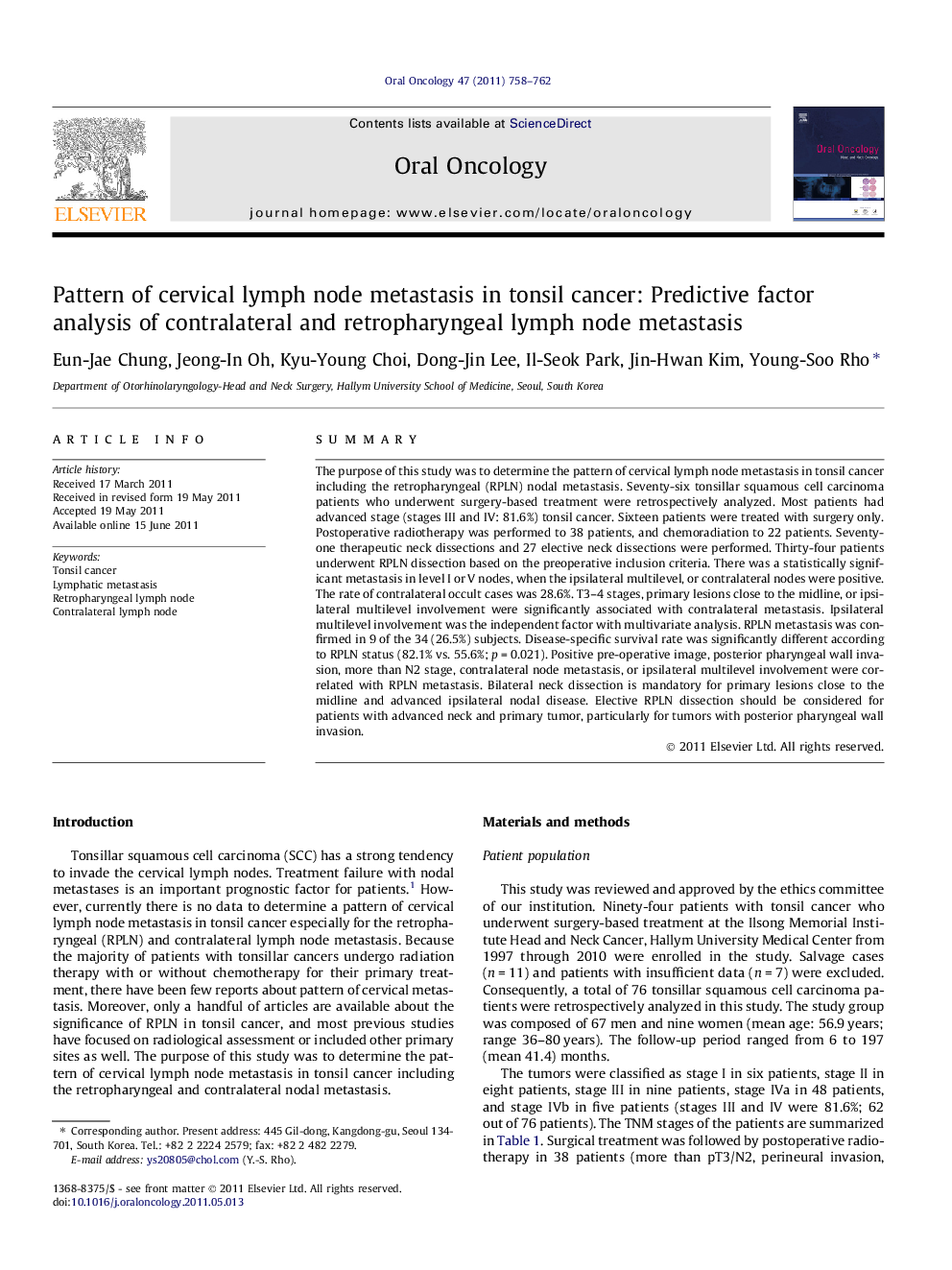| Article ID | Journal | Published Year | Pages | File Type |
|---|---|---|---|---|
| 6055295 | Oral Oncology | 2011 | 5 Pages |
Abstract
The purpose of this study was to determine the pattern of cervical lymph node metastasis in tonsil cancer including the retropharyngeal (RPLN) nodal metastasis. Seventy-six tonsillar squamous cell carcinoma patients who underwent surgery-based treatment were retrospectively analyzed. Most patients had advanced stage (stages III and IV: 81.6%) tonsil cancer. Sixteen patients were treated with surgery only. Postoperative radiotherapy was performed to 38 patients, and chemoradiation to 22 patients. Seventy-one therapeutic neck dissections and 27 elective neck dissections were performed. Thirty-four patients underwent RPLN dissection based on the preoperative inclusion criteria. There was a statistically significant metastasis in level I or V nodes, when the ipsilateral multilevel, or contralateral nodes were positive. The rate of contralateral occult cases was 28.6%. T3-4 stages, primary lesions close to the midline, or ipsilateral multilevel involvement were significantly associated with contralateral metastasis. Ipsilateral multilevel involvement was the independent factor with multivariate analysis. RPLN metastasis was confirmed in 9 of the 34 (26.5%) subjects. Disease-specific survival rate was significantly different according to RPLN status (82.1% vs. 55.6%; p = 0.021). Positive pre-operative image, posterior pharyngeal wall invasion, more than N2 stage, contralateral node metastasis, or ipsilateral multilevel involvement were correlated with RPLN metastasis. Bilateral neck dissection is mandatory for primary lesions close to the midline and advanced ipsilateral nodal disease. Elective RPLN dissection should be considered for patients with advanced neck and primary tumor, particularly for tumors with posterior pharyngeal wall invasion.
Related Topics
Health Sciences
Medicine and Dentistry
Dentistry, Oral Surgery and Medicine
Authors
Eun-Jae Chung, Jeong-In Oh, Kyu-Young Choi, Dong-Jin Lee, Il-Seok Park, Jin-Hwan Kim, Young-Soo Rho,
